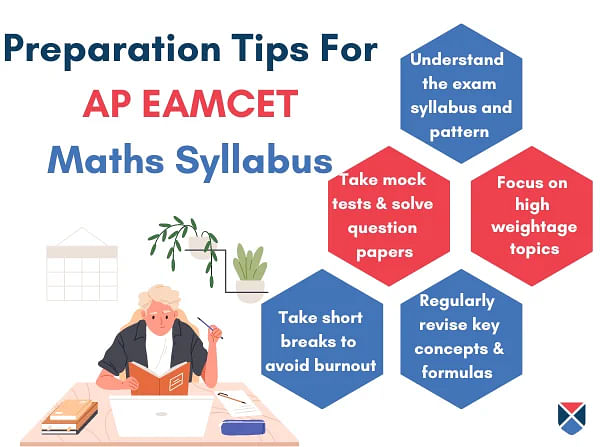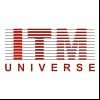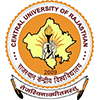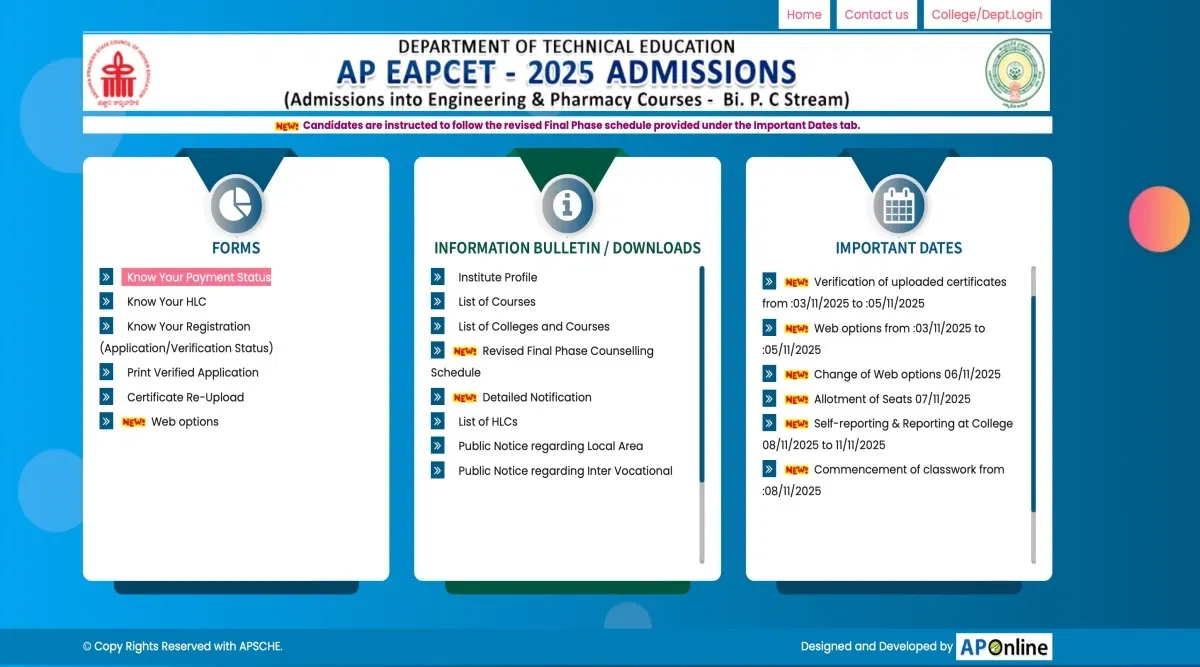
Table of Contents
AP EAMCET Maths Syllabus 2025 covers crucial topics such as Algebra, Trigonometry, Vector Algebra, Probability, Coordinate Geometry, and Calculus. The AP EAMCET Maths Syllabus PDF is available for download on the official website at cets.apsche.ap.gov.in.
Candidates can access the topics and sub-topics included in the AP EAMCET syllabus 2025. The important topics and a chapter-wise weightage of the topics are discussed in detail on this page. Students must not skip any topics with high weightage as they have a high chance of coming up in the exams.
The AP EAMCET 2025 Maths Syllabus is based on the curriculum of the Andhra Pradesh Board of Intermediate Education. Candidates can expect the difficulty level of the AP EAMCET Maths Syllabus to be moderate-difficult.
Download: AP EAMCET Previous Years Question Papers
AP EAMCET Maths Syllabus 2025 PDF
Candidates can access the AP EAMCET 2025 Maths Syllabus PDF by clicking the link below. The PDF contains all the topics students need to prepare for the AP EAMCET 2025 exam.
| AP EAMCET Maths Syllabus PDF | Download PDF |
Also Read:
AP EAMCET 2025 Maths Syllabus
Candidates can review the syllabus for a solid understanding of the basic concepts. The AP EAMCET syllabus for Maths is detailed in the table below:
| Topics | Sub-Topics |
| Algebra | Functions, Complex Numbers, Matrices,De Moivre’s Theorem, Quadratic Expressions, Theory of Equations, Permutations and Combinations, Binomial Theorem, Partial Fractions |
| Trigonometry | Trigonometric Ratios Upto Transformations, Hyperbolic Functions, Properties of Triangles |
| Vector Algebra | Addition of Vectors, Product of Vectors |
| Measures of Dispersion and Probability | Measures of Dispersion, Random Variables, Probability,and Probability Distributions |
| Coordinate Geometry | Locus, The Straight Line, Pair of Straight Lines, Circle, System of Circles, Parabola, Ellipse, Hyperbola, Direction Cosines and Direction Ratios, Three Dimensional Coordinates, Plane. |
| Calculus | Limits and Continuity, Applications of Derivatives, Differentiation, Integration, Differential Equations, Definite Integrals, |
AP EAMCET Maths Syllabus in Detail
The detailed AP EAMCET Maths 2025 topics for Math have been outlined below. Candidates must cover all the topics and subtopics while preparing for the AP EAMCET exam.
Algebra:
- Functions: Types of Functions, Definitions, Range, Domain.
- Matrices: Types of Matrices, Multiplication of Matrices Scalar Multiple of a Matrix, Transpose of Matrix, Determinants, Adjoint & Inverse of a Matrix - Rank of a Matrix, Solution of Simultaneous Linear Equations.
- De Moivre’s Theorem: De Moivre’s Theorem, Integral & Rational Indices, Geometrical Interpretations, Nth Roots of Unity, Illustrations.
- Complex Numbers: Complex Number as Ordered Pair of Real Numbers, the Representation of Complex Numbers in the Form A+Ib - Modulus & Amplitude of Complex Numbers, Fundamental Operations, Illustrations, Geometrical & Polar Representation of Complex Numbers in Argand Plane-Argand Diagram.
- Theory of Equations: The Relation Between Roots and Coefficients in an Equation, Solving Equations When 2 or More Roots Are Connected by Certain Relation, Equation With Real Coefficients, Transformation of Equations, Occurrence of Complex Roots in Conjugate Pairs and Consequences, Reciprocal Equations.
- Quadratic Expressions: Quadratic Expressions, Sign of Quadratic Expressions, Equations in One Variable, Change in Signs, Quadratic Inequations, Maximum and Minimum Values.
- Permutations & Combinations: Fundamental Principle of Counting, Linear & Circular Permutations, Permutations When Repetitions Allowed, Permutations of ‘N’ Dissimilar Things Taken ‘R’ at a Time, Circular Permutations, Certain Theorems, Permutations With Constraint Repetitions, Combinations-Definitions.
- Partial Fractions: Solving Partial Fractions of F(X)/G(X)- a. When G(X) Contains Non-Repeated Linear Factors b. When Both F(X) & G(X) Are Polynomials and When G(X) Contains Repeated and Non-repeated Linear Factors c. When G(X) Contains Irreducible Factors.
- Binomial Theorem: Binomial Theorem for Positive Integral Index-for Rational Index (Without Proof). Approximations Using Binomial Theorem
Trigonometry:
- Properties of Triangles: Relation Between the Sides and Angles of Triangle - Sine-Cosine-Tangent & Projection Rules- the Half Angle Formulae & Areas of a Triangle, In-Circle, and Excircle of a Triangle (Excluding Problems Related to Heights and Distances).
- Trigonometric Ratios Upto Transformations: The Graphs & Periodicity of the Trigonometric Functions, Trigonometric Ratios & Compound Angles, the Trigonometric Ratios of Multiple & Sub- Multiple Angles, Transformations - Sum and Product Rules.
- Hyperbolic Functions: The Definition of Hyperbolic Function, Graphs - the Definition of Inverse Hyperbolic Functions, Graphs - Addition Formulae of Hyperbolic Functions.
Vector Algebra:
- Addition of Vectors: Vectors as the Triad of Real Numbers, Classification of Vectors, Scalar Multiplication, Addition of Vectors, Angle Between Two Non-zero Vectors, Component of a Vector in Three Dimensions, Linear Combination of Vectors, Vector Equations of Line & Plane Including Cartesian Equivalent Forms.
- Product of Vectors: Geometrical Interpretations - Orthogonal Projections, Properties of Dot Product, Scalar Product, Angle Between Two Vectors, Vector Equations of Plane in Normal Form-Angle Between Two Planes, Geometrical Vector Methods, Vector Areas.
Measures of Dispersion & Probability:
- Measures of Dispersion: Mean Deviation, Range, Coefficient of Variation, Variance, Standard Deviation of Ungrouped/Grouped Data, Analysis of the Frequency Distribution Equal Means and their Different Variances.
- Probability: Random Experiments & Events, Classical Definition of Probability, Independent and Dependent Events, Axiomatic Approach and Addition Theorem of Probability, Conditional Probability, Multiplication Theorem and Bayes Theorem.
- Random Variables and Probability Distributions: Random Variables, Binomial and Poisson Distributions, Theoretical Discrete Distributions.
Coordinate Geometry:
- Locus: Definition of Locus, Illustrations-to Find Equations of Locus-Problems Connected Toit.
- The Straight Line: Revision of Fundamental Results, Straight Line - Normal Form –Illustrations, Straight Line - Symmetric Form, Straight Line - Reduction Into Various Forms, Intersection of Two Straight Lines, Family of Straight Lines, Concurrent Lines - ConditionFor Concurrent Lines, the Angle Between Two Lines, the Length of Perpendicular From a Point to A Line, Distance Between Two Parallel Lines, Concurrent Lines - Properties Related to A Triangle.
- Pair of Straight Lines: Equations of Pair of Lines Passing Through Origin, Angle Between a Pair of Lines, Condition for Perpendicular and Coincident Lines, Bisectors of Angles, Pair of Bisectors of Angles (Excluding Proofs of All the Theorems Only), Pair of Lines, Second Degree General Equation, Conditions for Parallel Lines, Distance Between Them, Point of Intersection of Pair of Lines, Homogenizing a Second Degree Equation With a First Degree Equation in X and Y.
- Circle: Equation of Circle, Standard Form-Centre and Radius Equation of a Circle With a Given Line Segment as Diameter & Equation of Circle Through Three Non Collinear Points, Parametric Equations of a Circle- Position of a Point in the Plane of a Circle, Power of a Point-Definition of Tangent-Length of Tangent - Position of a Straight Line in the Plane of a Circle-Conditions for a Line to Be Tangent, Chord Joining Two Points on a Circle, Equation of the Tangent at a Point on the Circle- Point of Contact-Equation of Normal-Chord of Contact Pole and Polar-Conjugate Points and Conjugate Lines- Equation of Chord With Given Middle Point, Relative Position of Two Circles- Circles Touching Each Other Externally, Internally Common Tangents, Centers of Similitude- Equation of Pair of Tangents From an External Point.
- System of Circles: Angle Between Two Intersecting Circles, Condition for Orthogonality - Radical Axis of Two Circles- Properties- Common Chord and Common Tangent of Two Circles, Radical Centre - Intersection of a Line and a Circle.
- Parabola: Conic Sections, Parabola- Equation of Parabola in Standard Form-Different Forms of Parabola, Parametric Equations, Equations of Tangent and Normal at a Point on the Parabola, Conditions for Straight Line to Be a Tangent.
- Ellipse: Equation of Ellipse in Standard Form- Parametric Equations, Equation of Tangent and Normal at a Point on the Ellipse, Condition for a Straight Line to Be a Tangent.
- Hyperbola: Equation of Hyperbola in Standard Form- Parametric Equations - Equations of Tangent and Normal at a Point on the Hyperbola, Conditions for a Straight Line to Be Tangent-Asymptotes.
- Three Dimensional Coordinates: Coordinates, Section Formulae, Centroid of a Triangle, and Tetrahedron.
- Direction Cosines and Direction Ratios: Direction Cosines, Direction Ratios).
- Plane: Cartesian Equation of Plane, Simple Illustrations.
Calculus:
- Limits and Continuity: Intervals and Neighborhoods, Limits - Standard Limits, Continuity.
- Differentiation: Derivative of a Function - Elementary Properties - Trigonometric, Inverse Trigonometric, Hyperbolic, Inverse Hyperbolic Function, Derivatives - Methods of Differentiation, Second Order Derivatives.
- Applications of Derivatives: Geometrical Interpretation of a Derivative, Equations of Tangents and Normals, Angles Between Two Curves and Condition for Orthogonality of Curves, Increasing and Decreasing Functions, Maxima and Minima.
- Integration: Integration as the Inverse Process of Differentiation- Standard Forms, Properties of Integrals, Method of Substitution, Integration of Algebraic, Exponential, Logarithmic, Trigonometric and Inverse Trigonometric Functions, Integration by Parts, Integration by Partial Fractions Method, Reduction Formulae.
- Definite Integrals: Definite Integral as the Limit of Sum, Interpretation of Definite Integral as an Area. Fundamental Theorem of Integral Calculus. Properties, Reduction Formulae, Application of Definite Integral to Areas.
- Differential Equations: Formation of Differential Equation-Degree and Order of an Ordinary Differential Equation, Solving Differential Equation by: Variables Separable Method, Homogeneous Differential Equation, Non Homogeneous Differential Equation, Linear Differential Equations.
Also Read: AP EAMCET Chapter Wise Weightage #Year
Important Topics in the AP EAMCET Maths Syllabus 2025
The Math portion of the AP EAMCET question paper features recurring questions from important topics that carry a high weightage. Students should focus on these topics and subtopics to prepare for the exam. The important topics include:
- Probability
- Vectors
- Calculus
- Algebra
- Indefinite Integration
- Matrices
- Trigonometry
- Cube root entity
- Modulus
- Complex Numbers
- Locus
- Maxima & Minima values
Don't Miss: How to Crack AP EAMCET 2025?
AP EAMCET Maths Weightage 2025
A high weightage indicates the likelihood of those topics appearing in the exam. It is important for candidates appearing for the AP EAMCET exam to focus on topics with high weightage. The AP EAMCET chapter wise weightage for Maths syllabus can be useful for candidates to prepare for the exam.
Below is the AP EAMCET Maths Weightage 2025, which can provide more details.
| Topic | Weightage |
| Probability | 7% |
| Vectors | 6% |
| Matrices Determinants | 5% |
| Limits | 5% |
| Sets, Relations and Functions | 5% |
| Definite Integration | 5% |
| Indefinite Integration | 5% |
| Theory of equations | 4% |
| Three Dimensional Geometry | 4% |
| Complex Numbers | 4% |
| Permutation and Combination | 4% |
Also Attempt: AP EAMCET Mock Test 2025
Books for AP EAMCET Maths Preparation
Students are advised to refer to the books listed below for effective preparation. Not only do these books for Maths preparations help students understand the concepts in depth but they also provide questions for practice.
| Books | Author |
| NCERT Class XI Mathematic | NCERT |
| NCERT Class XII Mathematics | |
| EAMCET Mathematics | Arihant Publications |
| Handbook Mathematics | Arihant Publications |
| Mathematics (Class XI and XII) | R.D. Sharma |
| Course in Mathematics | K.R. Choubey |
Recommened: AP EAMCET Books 2025
Preparation Tips for AP EAMCET Syllabus Maths 2025
To ace the AP EAMCET exam, candidates must work out a preparation strategy on AP EAMCET Maths Syllabus 2025 that best suits their ability. Below are some helpful tips that candidates can follow to prepare for the exam:
- Understand the AP EAMCET syllabus and exam pattern thoroughly.
- Combine BITSAT Maths Weightage 2025 and the detailed syllabus to strategically focus on vital topics, including Algebra, Calculus, Geometry, and Trigonometry.
- Take the AP EAMCET mock tests and solve the previous year’s question papers to become familiar with the exam paper. Reviewing past papers offers insights into the exam pattern and question format.
- Analyze the BITSAT exam pattern to structure a study plan with efficient time distribution across essential topics.
- Implement your study plan at least 5-6 months before the BITSAT exam. Reserve the last month for thorough topic revision and solving numerous mock tests and question papers for exam simulation.
- Minimize distractions during study sessions by keeping mobiles and laptops away. A focused study environment enhances concentration and effectiveness.
- Focus on topics with higher weightage to understand crucial topics.
- Utilize various scientific materials, including textbooks, journals, research papers, and articles, to stay updated on current developments in the field of mathematics.
- Take short breaks while studying to avoid burnout and stress.
- Regularly revise to retain key concepts such as formulas, concepts, and techniques to solve problems.

Also Read: AP EAMCET Qualifying Marks 2025




































